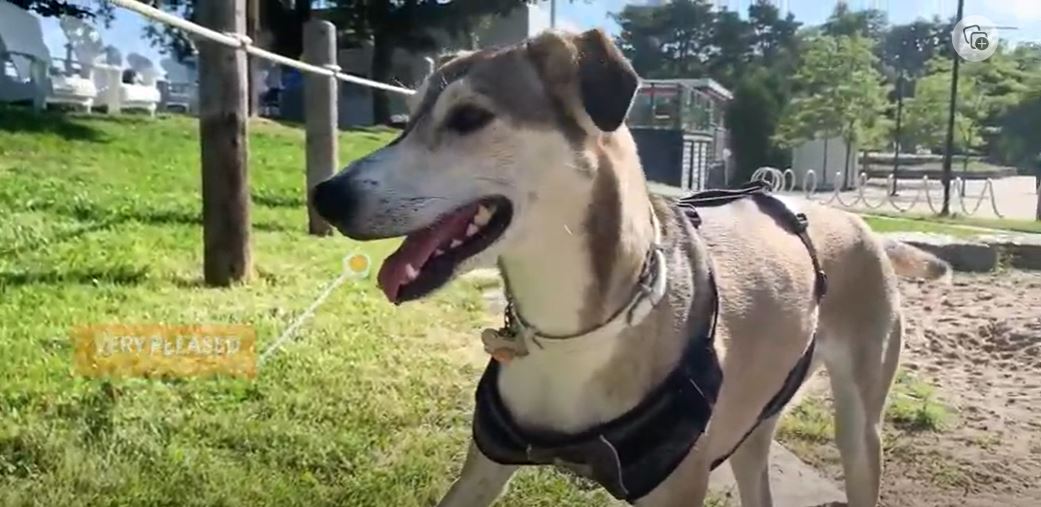
My Dog Jumped After Being Spayed
My Dog Jumped After Being Spayed
Understanding the spaying procedure and its effects on dogs
Spaying, also known as an ovariohysterectomy, is a surgical procedure performed on female dogs to remove their ovaries and, usually, their uterus. The primary purpose of spaying is to prevent reproduction, but it also has several health and behavioral benefits. Here’s an overview of the procedure and its effects:
Procedure:
Preparation: The dog is usually given a physical examination, blood tests, and sometimes other diagnostic tests to ensure she is healthy enough for surgery.
Anesthesia: The dog is anesthetized to ensure she remains unconscious and pain-free during the surgery.
Surgical Incision: An incision is made in the abdominal wall, usually near the midline. The veterinarian gains access to the ovaries and uterus through this incision.
Ovary and Uterus Removal: The ovaries and often the uterus are carefully removed. The blood vessels and other structures are tied off or cauterized to prevent bleeding.
Closure: The incision is closed using stitches or sutures. In some cases, external skin glue or staples may be used.
Recovery: The dog is monitored closely as she wakes up from anesthesia. Pain medications may be provided to manage post-operative discomfort.
Effects and Benefits:
Prevents Reproduction: Spaying eliminates the possibility of unwanted pregnancies and contributes to controlling the pet population.
Eliminates Heat Cycles: Female dogs undergo heat cycles (estrus) during which they can attract males and might have behavioral changes. Spaying stops these cycles.
Reduces Risk of Certain Health Issues: Spaying significantly reduces the risk of uterine infections (pyometra) and decreases the likelihood of mammary (breast) tumors, especially before the first heat cycle.
Behavioral Changes: Spaying can lead to reduced roaming behavior, aggression, and territorial marking that often occur during heat cycles.
Long-Term Cost Savings: Preventing certain health issues can lead to potential cost savings on veterinary treatment bills.
Considerations:
Timing: The optimal time to spay a dog is before her first heat cycle. However, consult your veterinarian to determine the best timing based on the breed, size, and individual health considerations.
Weight Management: Spayed dogs may tend to gain weight more easily, so maintaining a healthy diet and exercise routine is crucial.
Potential Risks: Like any surgical procedure, spaying carries a small risk of complications such as infection, reaction to anesthesia, or poor wound healing.
Impact on Growth: Spaying before maturity might influence growth patterns, potentially affecting bone development in large breeds.
Before proceeding with spaying, it’s essential to consult a veterinarian. They can provide personalized advice based on your dog’s breed, age, health status, and circumstances.
Why did my dog jump after being spayed?
It’s common for dogs to display unexpected behaviors after surgery, including spaying. While I can’t provide a definitive answer without more context, there are a few possible reasons why your dog might have jumped after being spayed:
Recovery Period: After surgery, dogs may experience grogginess or disorientation due to the effects of anesthesia. As they wake up and regain consciousness, they might display unusual behaviors, such as jumping or twitching. This could be a temporary reaction to the anesthesia wearing off.
Discomfort or Pain: While most dogs receive pain medication to manage post-operative pain, discomfort or sensitivity around the incision site can still be present. Jumping could respond to the discomfort, as the dog might be trying to find a more comfortable position or alleviate pressure from the incision area.
Disorientation: Anesthesia and the surgical process itself can sometimes cause dogs to feel disoriented or confused. This might lead to unusual behaviors, such as jumping, as the dog tries to figure out its surroundings.
Natural Behavior: Some dogs are naturally more active or excitable, and their behavior might not directly relate to the surgery. If your dog is generally energetic, it could display its usual behavior, unaware of the recent surgery.
Environmental Stimuli: Dogs can react to various environmental stimuli, such as sounds, smells, or sights. Something that caught your dog’s attention could have led to a sudden jump.
Recovery Room: If your dog jumped shortly after waking up from anesthesia in the recovery room, it might have resulted from a strange environment or unfamiliar people.
If your dog’s behavior seems unusual or concerning, it’s a good idea to contact your veterinarian for guidance. They can help assess whether the behavior is related to the surgery or if there might be another underlying issue. Providing a calm and comfortable environment for your dog during recovery is important to help them heal and adjust after the surgery.
How can I stop my dog from jumping after being spayed?
Here are some tips to help stop your dog from jumping:
Use a Recovery Cone (E-collar): A recovery cone, also known as an Elizabethan collar or E-collar, can prevent your dog from reaching the surgery site with her mouth. This can discourage her from licking or biting the incision, which could lead to infection or other complications.
Keep Her Confined: Limit your dog’s movement by confining her to a quiet, safe area like a small room or a crate. This will reduce the temptation to jump or move around too much.
Supervision: When you’re with your dog, watch her closely to ensure she doesn’t jump. If you see her attempting to jump, gently discourage her using verbal cues or a gentle leash tug.
Leash Walking: When you need to take your dog outside for bathroom breaks, use a leash and guide her on short, controlled walks rather than letting her roam freely.
Provide a Comfortable Resting Area: Make sure your dog has a comfortable and cozy resting area with soft bedding. This can encourage her to stay put and relax instead of trying to jump onto furniture or other elevated surfaces.
Use Ramps or Steps: If your dog is accustomed to jumping onto furniture or your bed, consider using ramps or steps to provide an alternative way for her to access these areas without jumping.
Interactive Toys and Puzzle Games: To help keep your dog mentally engaged without physical exertion, provide her with interactive toys or puzzle games that require problem-solving and manipulation.
Calming Techniques: Incorporate calming techniques, such as gentle massage, soft music, or aromatherapy, to create a soothing environment that encourages relaxation.
Positive Reinforcement: Reward your dog with treats, praise, or gentle pets when she remains calm and doesn’t jump. Positive reinforcement can help reinforce desired behaviors.
Consult Your Veterinarian: If you’re concerned about your dog’s behavior or recovery, don’t hesitate to contact your veterinarian. They can provide specific guidance based on your dog’s needs and circumstances.
Remember that balancing preventing excessive movement and allowing your dog light activity is crucial. Too much confinement can also lead to other issues, so consult your veterinarian for an appropriate recovery plan for your dog.
What other problems can jump cause after being spayed?
Jumping can cause various problems for a dog after spaying, particularly during recovery. It’s important to prevent excessive jumping to ensure proper healing and minimize the risk of complications.
Here are some potential problems that excessive jumping can lead to after a spay surgery:
Delayed Healing: Jumping can strain the incision site, which might cause the stitches or sutures to become stressed or even undone. This can lead to delayed healing, increased risk of infection, and a longer recovery time.
Incision Complications: Jumping can cause the incision to reopen or become irritated, leading to pain, inflammation, and a higher risk of infection. This can be especially problematic if the incision site is not dry.
Infection: A surgical incision provides an entry point for bacteria, and excessive jumping can introduce dirt and debris to the wound, increasing the risk of infection. An infected incision can cause pain, swelling, redness, and discharge and require additional medical treatment.
Hematoma Formation: Jumping or excessive movement can lead to the formation of hematomas, which are pockets of blood that accumulate near the surgical site. Hematomas can cause discomfort and swelling and may require drainage.
Seroma Formation: Similar to hematomas, seromas are pockets of fluid that can form under the skin at the surgical site. They can cause swelling and discomfort and may require medical attention if they persist.
Increased Pain: Jumping can cause strain on the abdominal muscles and incision area, leading to increased pain and discomfort for the dog.
Internal Healing: While the primary concern is the external incision, it’s important to remember that internal healing is also taking place. Excessive jumping can strain internal tissues and interfere with the healing process.
Stress and Anxiety: Dogs in pain or discomfort may become stressed, anxious, or irritable. Excessive jumping can exacerbate these negative emotions and hinder overall recovery.
Scarring: If the incision site is stressed or disrupted due to jumping, it can lead to more noticeable scarring.
Conclusion
After spaying, taking certain measures is important to ensure a smooth recovery and minimize complications. Excessive jumping should be prevented, as it can lead to problems such as delayed healing, incision complications, infection, hematoma or seroma formation, increased pain, and stress. Proper post-operative care, including using a recovery cone, keeping the dog confined, supervising her closely, providing a comfortable resting area, and avoiding situations that encourage jumping, can all contribute to a successful recovery.
Always consult your veterinarian for guidance on how to best care for your dog after spaying. With proper care and attention, you can help your furry companion heal effectively and enjoy a healthy and comfortable post-operative period.






[…] Which foreign pets are legal in Washington State? […]